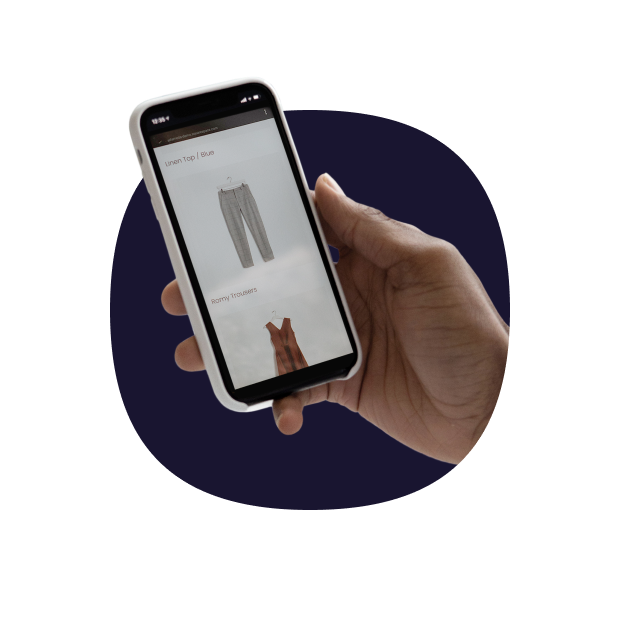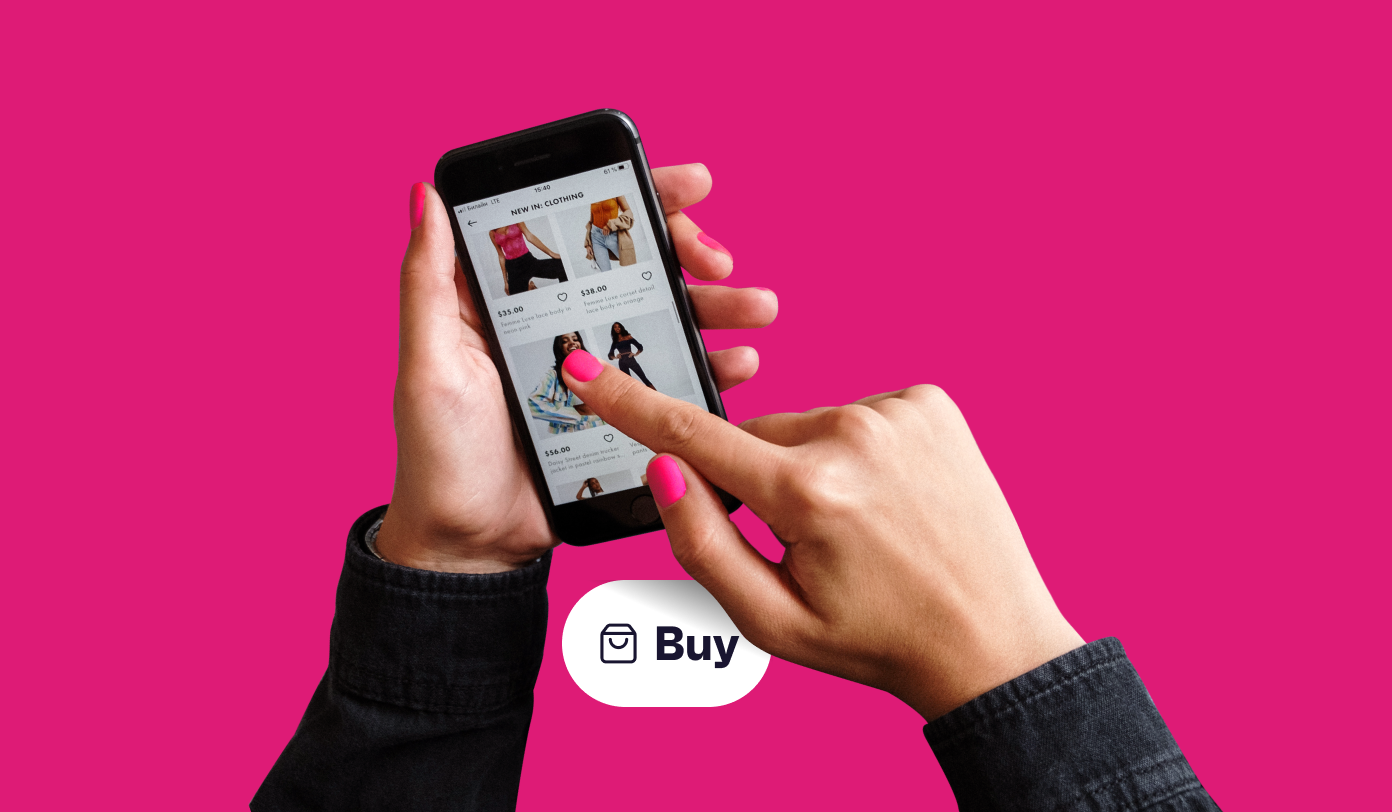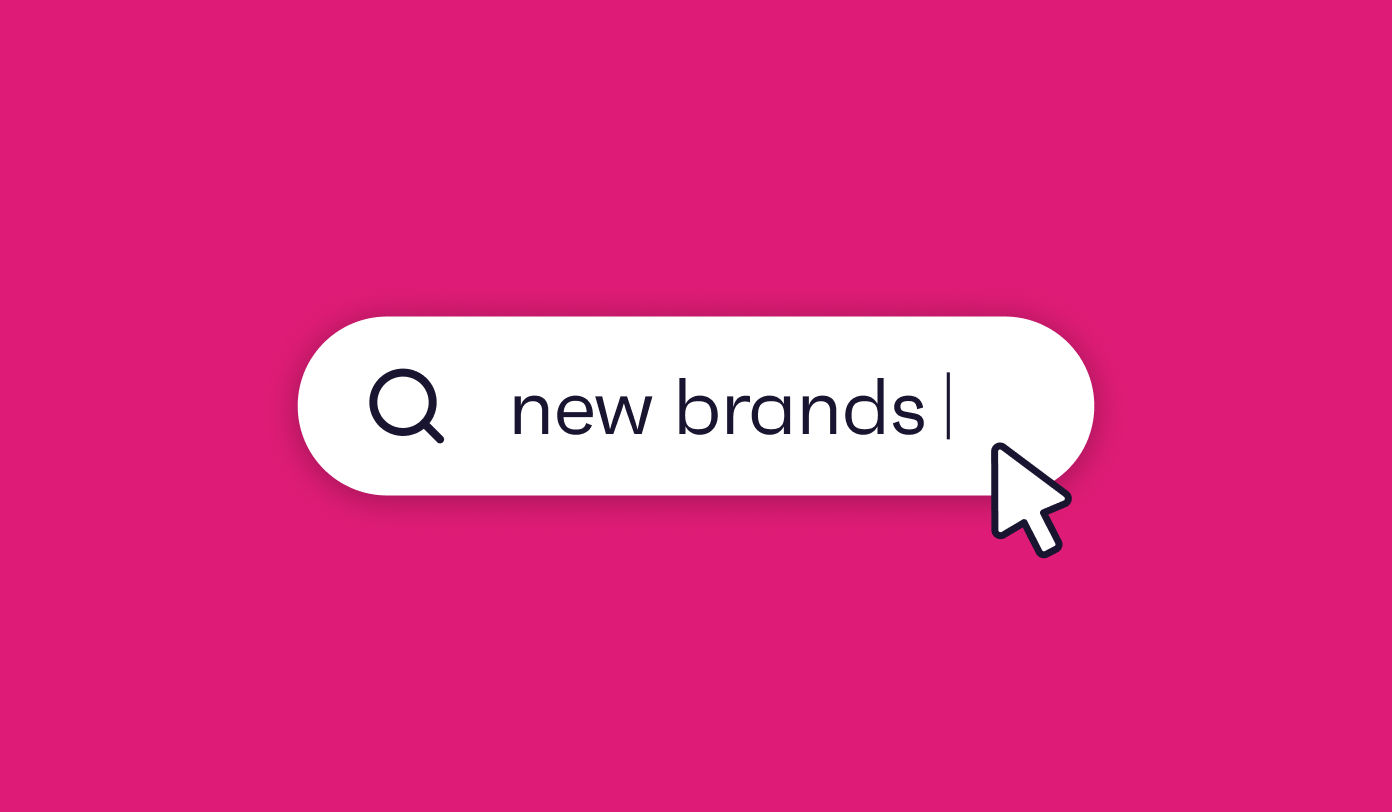Trying to reach your consumers without a solid ad targeting strategy is like making a TikTok on Reddit. While we applaud your experimental spirit, it simply won’t work.
If there’s ever a good time to take a trial-and-error approach to your ad campaigns (spoiler: there isn’t one), it certainly isn’t now. With quick turnarounds, tight business budgets, and consumers facing economic uncertainty, you need 100% accuracy if you want to reach the right audience. The good news is, all it takes is the right formula to improve your ad targeting and catapult your brand straight to the top of your audience’s must-have list. But first, let’s quickly cover the fundamentals.
What is targeted advertising?
Targeted advertising is a way of showing ads to specific groups of people based on things like their interests, behaviors, and characteristics. It’s all about making sure the ads they see are relevant to what they care about.
What are the different types of targeted advertising?
Ever searched for a new phone and then noticed ads for it everywhere? That’s a perfect example of targeted advertising. By using different types of data to influence their ad targeting, brands can match their messages to what potential customers are interested in. Let’s break it down:
Contextual ad targeting
Contextual ad targeting puts ads on websites or web pages that match the content you’re viewing. For example, if you’re reading an article about hiking, you might see an ad for hiking boots. This way, the ads directly relate to what you’re looking at at that moment.
Behavioral ad targeting/audience targeting
Behavioral ad targeting (also known as audience targeting) focuses on your online activities, like what you search for or buy. As we just mentioned, if you’ve been looking up smartphones, you’ll probably start noticing ads for the latest model following you around the internet. But hey, no need to feel creeped out – it’s just behavioral ad targeting doing its thing.
Demographic targeting
Demographic targeting uses information like age, gender, income, or education to show ads that are more specific to that audience. For example, a luxury car brand might target ads to people in their 30s and 40s with higher incomes. It’s about making educated guesses based on consumer demographics. Or being more accurate using consumer research data.
Retargeting
Remember those shoes you left stranded in your shopping cart? If it feels like they’ve been stalking you around the internet ever since, that’s retargeting at work. Retargeting is aimed at people who’ve already interacted with a brand but haven’t taken the next step. Think of it as a gentle reminder to come back and finish the job.
Geotargeting
Geotargeting shows ads based on your location, like a local restaurant showing ads to people within a few miles. It can be as broad as targeting your country or as specific as your neighborhood.
Placement targeting
With placement targeting, brands can pick specific websites, apps, or even particular sections of a site to show their ads. So, if they want to reach people interested in tech, they might choose to advertise on a tech blog. Or a travel agency might place its ads on popular travel blogs, where they know their ideal audience will spend their time.
Keyword targeting
When you search for something online, the ads you see are usually related to your search terms. That’s keyword targeting in action. For example, if you’re searching for “best running shoes,” you’ll likely be met with ads for athletic shoes at the top of the results page. This type of targeting is especially effective because it captures users who are actively searching for a product or service, indicating high intent and a greater likelihood of conversion.
Device targeting
Finally, ads can be different depending on whether you’re on your phone, tablet, or computer. A mobile ad might offer a quick and easy way to buy something, while a desktop ad could have more details.
So, next time you’re online and notice an ad, think about how it got there. Chances are, it’s been carefully targeted to you.
What are the benefits of ad targeting?
By focusing on the right audience, businesses can make sure their ads actually resonate with the people who see them. Here’s why that’s so important:
Higher conversion rates and ROI
By focusing your ads on the right people, you’re putting your cash where it counts. You’ll see more people converting (doing what you want them to do) and, as a result, will get way more bang for your buck.
Brand recognition
By continuously delivering relevant ads to your audience, you make your brand sticky. The more they see you, the more they remember you, boosting brand awareness and making your brand a familiar name.
Lower cost per acquisition
When you target your ads at the right audience, you avoid wasting budget on those who aren’t interested. You’re effectively spending less money to get each new customer, which leads to lower costs and a better return on your advertising spend.
Elevated customer experience
Customers love it when you understand them. And targeted ads prove that you do. When people see messages that actually matter to them, it improves their experience with your brand, leading to increased customer loyalty and advocacy.
Reconnect with past visitors
Those customers who added items to their cart but bolted before hitting “buy”? Retargeting helps you reel them back in, turning missed chances into money-makers. Think of all the revenue you’d miss if you let them slip away for good.
10 ways to improve your ad targeting
Now we’ve covered the importance of getting ads in front of the right people, let’s jump into some tactics. Here are 10 simple ways to fine-tune your ad targeting and connect with your ideal audience.
1. Prioritize first-party data
From now on, consider yourself a data zen master. You must become one with first-party data. Why? Because your website’s data is the crystal ball that will show you pretty much everything you need to know.
Data is your key to mapping out the ideal customer and building your target audience. You’ll get essential intel about who has been visiting your site, what pages they’re viewing, and their process before converting from browser to buyer.
So, where should you start? If you want clear, reliable data on user journeys and audience demographics, your first port of call is Google Analytics 4. This powerful tool will give you a deep dive into how people interact with your website, helping you to uncover hidden patterns, identify top-performing pages, and understand where people are dropping off.
2. Choose the right advertising platform
Imagine trying to sell surfboards in the desert. Doesn’t make much sense, right? Well, the same goes for your ads. You want to show up where your customers are hanging out. It’s not just about getting your ads out there; it’s about working out where your target audience spends their time, where they’re most likely to interact with your ads, and – importantly – what their intent is.
For example, when it comes to product discovery, Gen Z mainly discovers new products on social media (32%), while millennials (33%) and Gen X (37%) prefer using search engines like Google. Baby boomers, however, still find new products through TV ads (46%). So if you’re thinking about pulling the plug on tv ads altogether, think again.
When we move down the funnel to the consideration stage, the way consumers research brands differs too. Gen Z sticks to social networks (51%), whereas millennials (50%), Gen X (56%), and baby boomers (62%) all turn to search engines.
This tells us that choosing the right platform isn’t just about where your audience hangs out, but is also about understanding their mindset. Are they in discovery mode, browsing for options, or ready to buy? Different platforms cater to different stages of the customer journey. And while it might be tempting to invest in emerging channels like Connected TV, if your audience isn’t interested in that platform, it’s best to give it a miss and focus on where they’re truly engaged.
3. Identify relevant KPIs for your ad campaign
There are no two ways about it – you need to know your KPIs like the back of your hand. These key performance indicators are the quantifiable measures that tell you what’s working and what isn’t, and they should directly align with your campaign objectives.
For example, if you’re aiming to boost brand awareness, don’t sweat low conversion rates. Instead, keep an eye on things like impressions and reach. But if conversions are your endgame, metrics like click-throughs and conversion rates become your top priority. It’s all about staying focused on the metrics that truly matter to your goals, and not getting distracted by vanity metrics that don’t drive results. The key is to identify what’s most important from the outset – whether it’s reach, engagement, conversions, or retention – and then track those metrics closely.
At the end of the day, you need to focus on the overall impact to the business and the potential ROI your ads bring. That’s how you quantify your advertising and request more budget when the time comes.
4. Optimize your ads with granular insights
To get the best results from your ads, make a habit of regularly checking in and looking at your data. This gives you a clear view of what’s happening and ensures your campaign doesn’t go over budget. Depending on the platform, you can use this data to fine-tune delivery by location, audience, persona, ad group, or keywords and manually optimize your performance based on your results.
But here’s the catch: while it’s tempting to keep tinkering with your ads, you need to give your campaigns some breathing room. Constant tweaking can disrupt reliable data collection and slow down the automated learning processes that platforms use to optimize their delivery. So, give your campaign time to gather the insights it needs (say maybe a week or two, depending on the scale), and then make informed adjustments. This balance between optimization and patience is key to getting the best out of your ads. Find the sweet spot and you’ll hit the jackpot.
5. Create viral campaigns your audience will love
Maybe (just maybe) there’s a little room for riskier content – as long as your goal is to drive engagement, not enragement.
With people spending an average of 2 hours 23 minutes a day scrolling through social media, why not grab their attention with something truly memorable? Create ads that make scrollers want to hit that share button. Find a way to tap into what your audience is talking about and join the conversation. Whether it’s a funny video, a thought-provoking question, or a heartwarming story, the key is to connect on a deeper level.
Remember, you don’t need to break the internet to make an impact. Just create something people genuinely enjoy and watch it spread like wildfire.
6. Inject some personalization
Raise your hand if you’ve ever sent a friend a meme or TikTok video with no other explanation than a simple follow-up message that succinctly explains everything – “me.” That’s the power of personalization.
Consumers want to feel seen, heard, and understood. In fact, 15% of consumers discover new brands or products through personalized purchase recommendations online.
People crave that personal touch. They want to know that you’re paying attention and truly get them. Use audience insights to uncover consumers’ pain points, tap into what they care about, and tailor your ads to resonate with them on a deeper level.
7. Test before you commit
Before you dive headfirst into your latest campaign, it’s a good idea to test the waters. Using a consumer research tool like GWI can give you a preview of whether your target audience is actually on the channel you’ve chosen before you start spending your budget.
But don’t just test once and call it a day – keep the testing going even after your campaign is live. Monitor how things are performing and be ready to tweak as needed. This ongoing testing helps you refine your strategy, ensuring your ads are always connecting with the right people.
8. Follow that funnel
If ad targeting is a game, you’ll want to follow all the activity from the first quarter to the final bell – as in, every single step of the way. This will help you attract, engage, and convert consumers. But only if you can discern the winners from the losers.
It’s pretty straightforward. The winning ads will be the ones that help leads stick throughout the entire funnel. The losing ads will be the ones that fizzle leads out before they make it to the end. Seeing a lot of form fills? Awesome! But don’t stop there – dig deeper to see how many of those leads actually convert further down the funnel. Keeping tabs on this will give you a clear picture of which ads resonate with your audience and which ones miss the mark.
Remember, quality over quantity is key. A smaller number of high-quality leads is often more valuable than a larger volume that doesn’t convert.
9. Keep tabs on emerging channels
Retail media networks have shaken up the marketing world, and they’re only getting bigger – soon to account for a fifth of global digital ad spend. These high-traffic sites are goldmines for reaching consumers who are already in a buying mindset. But the real magic happens when you uncover unexpected consumer overlaps.
Take the sneaker market. One in five eBay users in the US buys sneakers every two to three months. By placing your sneaker ads where your audience is already browsing and spending – like on eBay – you can significantly boost your chances of catching their eye and driving sales.
10. Stay relevant with trended consumer data
When it comes to digital advertising, staying relevant is everything. To create ads that truly resonate, you need to know what’s trending and be ready to adapt as consumer attitudes shift. This is where consumer research comes into play.
With GWI’s data, updated every quarter, you can keep a finger on the pulse of what’s hot with your audience. As consumer attitudes evolve, so can your ads. Whether it’s a shift in buying habits or a new cultural trend, our data helps you stay ahead of the curve.
Need to be even more reactive? GWI Zeitgeist gives you monthly insights into current events and conversations, so you can create ads that tap into what’s top of mind for your audience. And if you’re planning campaigns around upcoming seasonal events, GWI Moments helps you zero in on key dates, giving you the insights you need to align your ads with what’s top of mind for your audience. By staying tuned in to your consumers, you can create ads that are relevant, timely, and impactful.
Ad targeting with GWI
Whoever said you can’t have your cake and eat it too clearly hasn’t met our consumer research platform. We’re here to show you that you really can have it all. With data representing 3 billion people across 50+ countries, our platform is the go-to place for on-demand insights that help you connect with your audience. We’ll help you:
- Narrow down your audience: Combine multiple data points including demographics, marketing touchpoints, and lifestyle habits to identify your perfect customer.
- Choose the right channels: Understand where your audience discovers new brands and what drives them to purchase.
- Craft the perfect message: Craft the ideal message to drive conversions by tapping into your audience’s purchase motivators.
The best performing ad campaigns start with data you trust, which is why consumer research is indispensable. Whether you’re looking to understand different generations’ tech purchase journeys, consumer media habits across the globe, or even more need niche insights – like how many men in South East Asia buy makeup – we’ve got you covered.
We’ll leave you with this
Not to get poetic, but the words of Goethe definitely ring true: “What makes [people] great is their ability to decide what is important and then focus their attention on it.”
In this case, we’re talking about techniques you can use to improve ad campaigns.
If you can zero in on what works, you’ll have a beeline straight into your consumers’ line of view. All without increasing your ad spend.
The essential media planning guide for better ad targeting
Unlock the guide





.webp?width=495&height=317&name=pink_thumb_graphs%20(1).webp)
.webp?width=495&height=317&name=pink_thumb_letter%20(2).webp)
